The Indian star tortoise is a threatened species native to India and Pakistan. It is a small reptile easily recognized by its star-shaped shell and unique patterns.
These tortoises require moderate care. Indian star tortoises are easy to care for, but their care can be time-consuming. These pets have strict food preparation requirements. They also have specific tank requirements. Indian star tortoises will become sick in the wrong tank conditions.
Indian Star Tortoise Overview
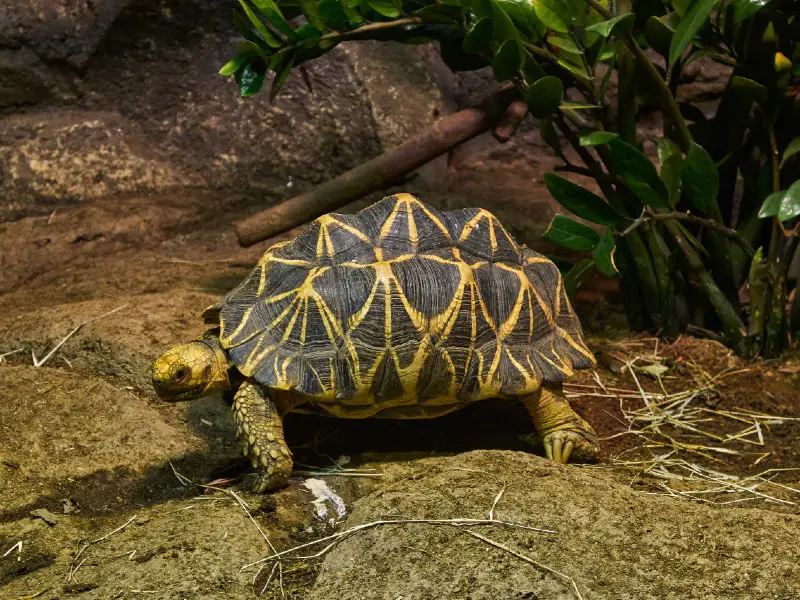
| Common Name(s) | Indian star tortoise, the star tortoise |
| Scientific Name | Geochelone elegans |
| Natural Habitat | Arid forests of South Asia |
| Adult Size | 7 to 12 inches |
| Average Lifespan | Up to 80 years |
| Diet | Plant-based |
| Housing | 50-gallon terrarium |
| Experience level | Intermediate |
Origin
The Indian star tortoise (Geochelone elegans) originates from South Asia, primarily India, Pakistan, and Sri Lanka. In India, it can be found in western regions, like Gujarat, Rajasthan, and Uttar Pradesh. This tortoise is also found in Southeast Asia, in places like Karnataka, Kerala, Tamil Nadu.
The tortoise can be found in Southeast Pakistan in the Thar desert. The tortoise’s natural habitat can vary from arid forests and grasslands to semi-arid low-land forests and deserts. The Indian star tortoise can adapt to regions with long dry or wet seasons, including climates prone to monsoons.
The Indian star tortoise is classified as threatened. The species was added to the International Union for Conservation of Nature (IUCN) Red List of Threatened Species in 2016. This was due to loss of habitat and wildlife poaching.
These tortoises are smuggled across the world. They are popular in South Asia because they are believed to have medicinal values and bring good fortune.
Appearance and Behavior
The Indian star tortoise has a bright pattern on its shell. This pattern looks like stars. The tortoise’s color depends on its origin.
Tortoises from India don’t have a lot of contrasting color patterns on their shells. These tortoises display dark and subdued coloration. Indian star tortoises from Sri Lanka have bright yellow patterns.
Indian star tortoises have a round body and a medium-sized head with a sharp beak. They have short thick legs and a tail. Males have longer tails than females.
The Indian star tortoise has an interesting body shape. Its shell has a high dome with horn-like scutes of various sizes. The scute creates a layered pattern and allows the animal to hide from predators in their natural habitat.
Size and Lifespan
Indian star tortoises usually measure 7 to 12 inches long (17.5 to 30 cm). They weigh between 1.5 to 2.5 kg. Adult females grow larger than males.
Indian star tortoises vary in size depending on their country of origin. Sri Lankan Indian star tortoises will grow larger than tortoises from Southwest India.
Indian star tortoises live between 30 and 80 years in the wild. Captive tortoises will only live up to 25 years due to the lack of natural conditions in which they thrive in the wild, like rains, sunshine, and high humidity.
Temperament
Indian star tortoises are quite shy and non-aggressive compared with other tortoise species. They are not territorial, but they will not do well with other animals. Make sure Indian star tortoises are kept with other Indian star tortoises.
You can house several Indian star tortoises in one tank without any problems. These pets will live together happily without trying to defend their territory.
Keep in mind that these pets do not like being touched and handled. Frequent touching causes them stress and can even lead to illness. These pets are calm and do not bite.
Housing Indian Star Tortoises
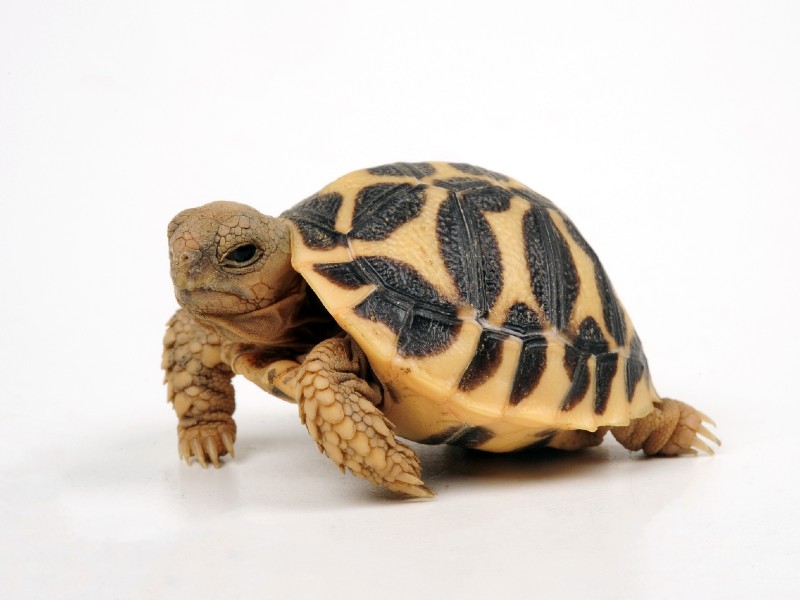
Indian star tortoises are adaptable to different climate conditions in the wild. They can survive in regions with extreme weather changes, including areas with monsoon seasons. Indian star tortoises live in a variety of landscapes in South Asia, including arid lands and forests, deserts, and lowlands.
Indian star tortoises originate from hot and dry regions in South Asia. They require conditions that match their natural habitat. This includes high temperatures as well as high humidity to replicate the rainy season, rich vegetation, and natural light.
Enclosure size
Indian star tortoises require an aquarium or a terrarium of at least 50 to 55-gallons. These tortoises do not climb or dig, so the enclosure doesn’t need to be deep. You can house your Indian star tortoise in an outdoor enclosure in a warm climate. Outdoor enclosures should be six feet long by six feet wide in size.
Multiple tortoises can share an enclosure. However, the enclosure will need to be larger than a single tortoise enclosure. Three females can live happily in eight feet by eight feet enclosures.
Lighting
Indian star tortoises prefer natural light. These tortoises should be kept outside whenever possible. Tortoises living indoors should stay near a window with plenty of natural sunlight.
Indoor enclosures should be fitted with UVB lamps. Doing so ensures the tortoise is able to process vitamin D3. Fit the enclosure with a 10% UVB bulb that covers the whole terrarium. Follow a natural day to night light cycle.
Temperature and Humidity
Indian star tortoises originate from arid climates. They need similar conditions in their terrarium. These reptiles require patches of hot and cold temperatures in the tank for basking and shaded spots.
The temperature in the basking spot should be kept constant at 95°F throughout the day. Install a basking lamp to maintain the required temperatures in indoor enclosures. Shaded areas should stay between 80°F and 85°F.
Make sure the outdoor enclosure temperature stays constant. Indian star tortoises need a constant temperature to thrive and will only tolerate a 10-degree drop in one day. Install a heating pad to ensure the enclosure temperature doesn’t drop lower than 70°F.
Use a hygrometer to check the humidity levels in the terrarium. Indian star tortoises thrive in high humidity levels. Ensure the terrarium has 80% humidity, and mist the terrarium occasionally to provide an additional moisture boost.
You can control the humidity levels in the tank by adjusting the vents or by installing an automatic humidifier. Line the terrarium with moss or soil to preserve humidity levels.
Substrate and Decoration
Line the terrarium with peat moss, soil, live grass, or hay. Indian star tortoises need a soft substrate that will contribute to the humidity level in the terrarium. Ensure there is a thick layer of substrate in the tank.
Place a large water bowl in the terrarium for the tortoise to bathe in. The tortoise will also drink from the water bowl. Make sure the bowl is big enough for the Indian star tortoise to climb in and out of.
Indian star tortoises are shy and will retreat into a hide box. Plants also act as hiding spots and provide shade and comfort. Tortoises like to nibble on foliage, so ensure the plants in the tank are tortoise-safe and non-toxic. Spider plants, Boston fern, and a variety of grass are appropriate for Indian star tortoise tanks.
Rocks make the setup more natural. Rocks are not necessary, but they help recreate the tortoise’s natural habitat.
Cleaning
Indian star tortoises require high hygiene standards. You should change their water daily and only give tortoises clean, filtered water.
Low hygiene conditions in the tank can result in infections. Deep clean the tank once a month. You should remove and disinfect decorations and accessories frequently.
Indian Star Tortoise Care
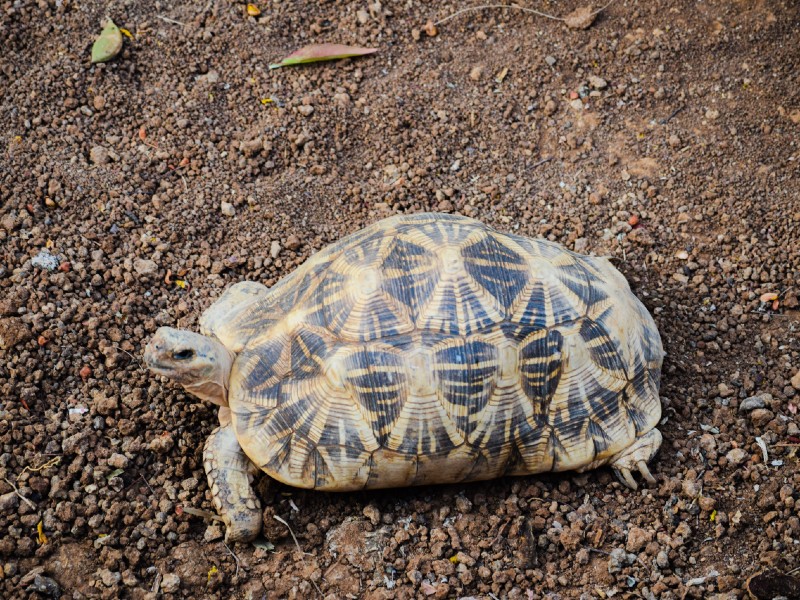
The Indian star tortoise has a moderate level of care. The tortoise requires a diverse plant-based diet and 15 to 30 minutes of feeding time daily. This species is susceptible to common tortoise diseases as a result of low hygiene standards or incorrect temperature and humidity levels in the tank.
Food and Water
Indian star tortoises are herbivores. Feed them a variety of leafy greens, vegetables, and fruit, so the tortoises get the necessary vitamins to stay healthy.
Follow a feeding schedule to ensure feeding times stay consistent every day. Indian star tortoises need one meal every day. Their mealtimes should last between 15 to 30 minutes to prevent overfeeding. Indian star tortoises are natural foreigners, so they scatter their food around the tank to encourage foraging behavior.
Feed Indian star tortoises Bermuda grass, Romaine lettuce, Timothy hay, and Ryegrass. Kale, parsley, and dandelions are also calcium-rich food options.
Small bits of fruit are great snacks for tortoises. Do not give tortoises meat or fish produce. Sprinkle calcium powder on their food to boost vitamin and mineral intake.
Provide Indian star tortoises with a large water bowl. The bowl should be big enough for the tortoises to bathe in. Change the water daily with filtered water to prevent infections and diseases.
Handling
Indian star tortoises are shy and do not like to be handled. Handling them can cause severe stress and will result in illness. Keep children away from Indian star tortoises.
Common Health Issues
The Indian star tortoise is susceptible to health issues common among tortoises. Health issues usually occur when the terrarium conditions are not at the right parameters. Respiratory conditions are common amongst Indian star tortoises. Low temperatures and low humidity levels contribute to respiratory issues. Early symptoms of respiratory conditions include loss of appetite and visible excess mucus discharge around their beak and nose.
Insufficient calcium and phosphorus will lead to metabolic bone disease. Lack of calcium stops Indian star tortoises shells from growing at the necessary pace, affecting their movement and general wellbeing. Prevent this disease by providing tortoises with sufficient UVB lighting and feeding them calcium-rich food and supplements. You should take your Indian star tortoise to an exotic pet vet if the tortoise shows signs of illness.
Breeding
Indian star tortoises can breed in captivity. Their breeding activity increases in the summer if they are kept outdoors. Indian star tortoises will lay eggs in the fall or in the winter. Tortoises kept in indoor enclosures will breed any time during the year if their terrarium conditions are appropriate.
Females will lay eggs 60 to 90 days after mating. Females will find an appropriate spot to lay their eggs. They will dig a hole in the substrate and fill the hole with the eggs. Indian star tortoises lay between three and 10 eggs.
Eggs will stay incubated in the substrate for 100 to 180 days. Ensure the tank temperatures stay between 80°F and 89°F to ensure success.
Place hatchlings indoors to protect them from predators and closely monitor their diet and health conditions. Feed hatchlings the same diet as adult tortoises. Indian star tortoises reach maturity within three to five years.
Indian star tortoises do not care for their hatchlings. Adult tortoises will not take care of their babies once the eggs hatch.
Choosing and Buying an Indian Star Tortoise
Indian star tortoises are rare and can be difficult to find in stores. They cost between $900 and $6000. Hatchlings are sold at a lower price than adult tortoises.
Buy Indian star tortoises from reputable breeders to decrease potential health risks. Use groups and hobbyist forums to research the best breeders.
Examine tortoises for signs of disease and infection before purchase. Tortoises with patchy and inconsistent shells can be suffering from a fungal infection. Healthy tortoises will have clear and smooth skin and beautiful shells with colorful patterns. Healthy tortoises are active and have an appetite, so ask to observe Indian star tortoises before purchase.

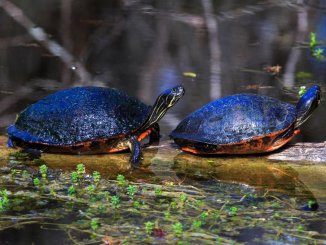
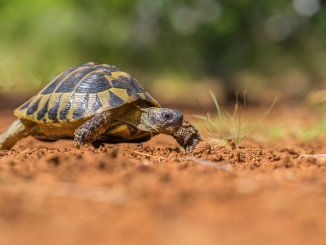
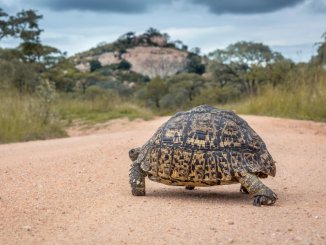

I want to own one. Where can I buy.?
Hi Vivek, glad we inspired you to want to care for one. While we do not have a list of sellers at this time, make sure you contact one that is authorized and that shows you the provenance of the animal, because this species is subject to (and threatened by) the illegal exotic animal trade.